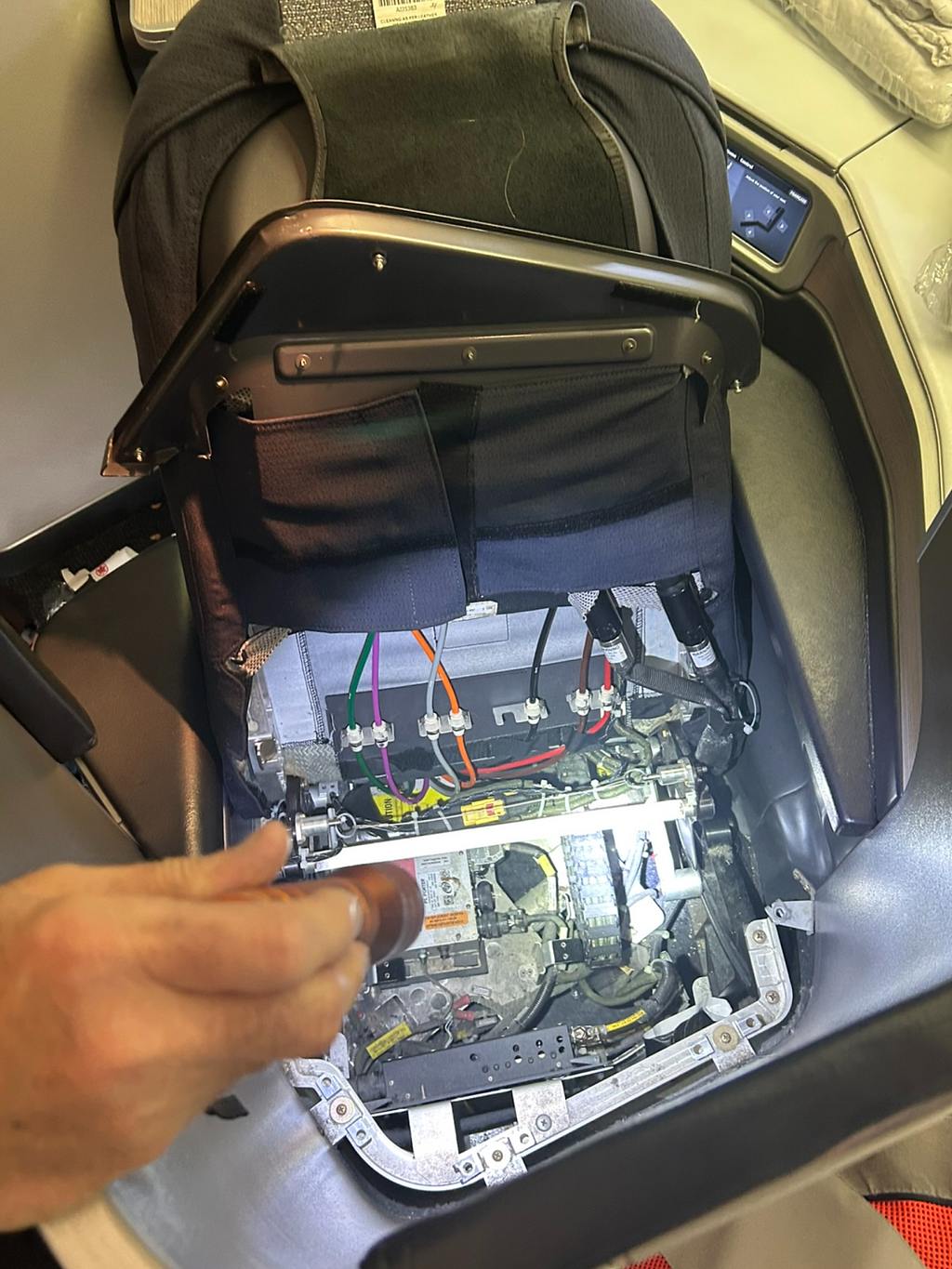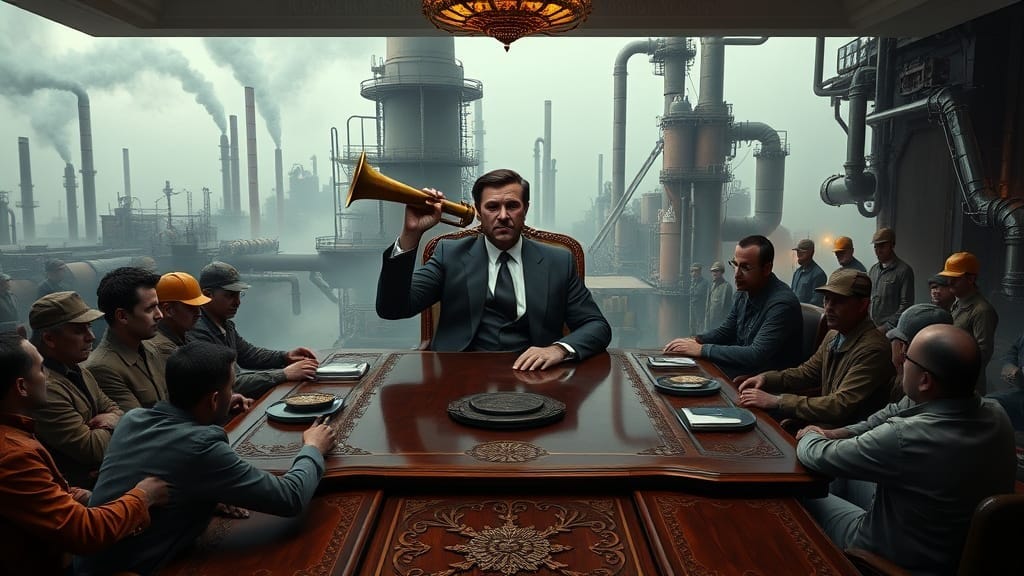“If you want to know if the elephant at the zoo has a stomachache, don’t ask the veterinarian, ask the cage cleaner.” — Robert Sapolsky
The best insights often come from the least expected places. The people who clean up the mess, fix the day-to-day problems, or interact directly with customers are usually the first to notice when something is off — long before it appears on an executive dashboard.
Ironically, as I was writing this, I was on a flight to run a workshop in Vancouver when my earbud slipped into my seat. “Not to worry,” said the flight attendant, “that happens at least once per flight.” Sure enough, after we landed, the gracious Air Canada crew called in four maintenance workers, who spent 20 minutes dismantling my seat, searching through wires and upholstery — ultimately, with no success.
Now, think about the sheer inefficiency: over 80 minutes of labour wasted, plus the opportunity cost of that team being pulled from other tasks. The real problem isn’t just lost earbuds; it’s a design flaw in the seats. If items are getting stuck this frequently, why hasn’t the issue been addressed? The signs are there — like my earbud, often the best ideas are hiding in plain sight!

This week’s Thursday Thought explores three stories — a cardiologist’s waiting room, a busy hotel chain, and a top airline executive — that highlight the power of listening to the people at the edges. Because often, the people closest to the problem already know the solution — if only someone would ask.The Upholsterer Who Discovered Type A Behaviour

In the mid-1950s, two cardiologists — Meyer Friedman and Ray Rosenman — noticed they were burning through waiting-room chairs at an alarming rate. Only the front edges of the seats and armrests were shredded, as if a herd of anxious beavers had passed through. They chalked it up to wear and tear, until an upholsterer showed up and blurted:
“What the hell is wrong with your patients? People don’t wear out chairs like this!”
Initially, his casual observation initially slipped by unnoticed. Friedman admitted: “I didn’t pay any attention to the man. I was too busy; it went in one ear and out the other.” It wasn’t until four or five years later that Dr. Friedman’s formal research with his patients began to yield some hints, at which point there was the thunderclap of memory — Oh, my god, the upholsterer, remember that guy going on about the wear pattern? And to this day, no one remembers his name.
Friedman and Rosenman realised their patients were perched on the edges of their seats, fidgeting and clawing away — a telltale sign of what they eventually termed Type A behaviour. That offhand comment from the upholsterer, in hindsight, helped spark an entire field of research linking impatience, time-pressuredness, and hostility to heart disease.
This breakthrough could have started years earlier if only the cardiologists had listened to the upholsterer’s words right away. As previous guest on The Innovation Show, Hal Gregersen put it,
“Instead of passively getting secondary data, actively seek passive data by seeking anomalies.”
The small, strange details can lead to massive breakthroughs — but only if you are paying attention or have a system in place that seeks out quirks in behaviour.
Von Hippel’s Hotel

On a recent episode of The Innovation Show , our guest and author of “Free Innovation”, Eric von Hippel shared a story in the same vein.
During the days of dial-up Internet, guests in a major hotel chain were constantly unplugging the in-room phone lines to connect their laptops. After hurriedly checking email, they’d forget to reattach the phone — and housekeeping kept finding phones tossed onto the middle of the room. Maintenance crews, annoyed at repeated fixes, tried:
- Special screws to stop guests from removing the phone jack.
- Welding the jack shut altogether — only to have people cut the cord instead.
For months, no one asked why it was happening. As von Hippel noted, the “innovation system” never included the cleaning staff or maintenance crews, so corporate decision-makers weren’t aware of the real problem or the solution that guests were craving. Eventually, somebody realised guests desperately needed easy in-room internet access. By then, the hotel had wasted time and money fighting an innovation problem they didn’t understand.
Like the cage cleaner or the upholsterer, housekeeping knew something was up long before management did — but no system existed to capture that insight.
Scrambled Eggs and Leadership Blind Spots

One morning, years ago, our guest on this week’s Innovation Show, Henry Mintzberg flew Eastern Airlines from Montreal to New York. At the time, Eastern was the largest airline in the world, but it was heading toward bankruptcy.
“They served food in those days”, he told us — “well, sort of”. What arrived in front of him was something the airline called “scrambled eggs.” He took one slurp and said to the flight attendant:
“I’ve eaten some awfully bad things in airplanes, but this has to be the worst.”
The flight attendant sighed:
“I know. We keep telling them; they won’t listen.”
Now how could this be? If they were running a cemetery, you could understand the difficulties of communicating with customers. But an airline?
Whenever Mintzberg encounters awful service or a badly designed product, he wonders: Is the management actually running the business, or just reading financial statements?
The financial analysts were certainly reading those statements, probably explaining Eastern’s troubles in terms of load factors and operational metrics. But numbers didn’t tell the whole story. Eastern Airlines went belly up because of those scrambled eggs. They weren’t just serving up bad food — they were serving up bad leadership, completely disconnected from the passenger experience.
Some years later, after telling this story to a group of managers, one of them — a former IBM executive — approached Mintzberg with another tale:
The CEO of Eastern Airlines came rushing in at the last minute for a flight. First class was full, so they bumped a paying customer down to economy to accommodate the CEO. Apparently feeling guilty, the CEO made his way to Economy Class to apologise to the displaced passenger. When he introduced himself as the CEO of Eastern Airlines, the inconvenienced passenger introduced himself as the CEO of IBM.
And that, right there, was the problem. Not who was bumped, but why. The airline’s leadership was flying at 30,000 feet — figuratively and literally — completely out of touch with their own customers.
If they had bothered to eat their own scrambled eggs, they might have saved themselves from egg on their face.
A Final Thought

“You must look for disconfirming evidence, for things that don’t fit, for things that are ajar. This is hard, because it forces you to write off your depreciating intellectual capital — you must admit not only that you do “not know” many things but that you “wrongly know” many things.” — Gary Hamel
In our forthcoming multi-part series with Gary Hamel, we explore this persistent gap between leadership and the edges of an organisation. As Gary puts it, leaders must build a bridge between the world they think they’re living in and the world everyone else is actually experiencing.
The lesson from the upholstery story — and from Eastern Airlines’ scrambled eggs — is clear: real insight often bubbles up from the periphery, not the boardroom. Warehouse workers, cleaning staff, delivery drivers, or frontline employees frequently spot shifts long before executive dashboards catch up. Their vantage points are invaluable precisely because they live with the operational ‘mess’ that others only analyse from a distance.
The challenge for leaders isn’t just to gather data but to listen for the anomalies, the small signals that don’t fit the existing narrative. It’s a direct parallel to Sapolsky’s elephant analogy: the veterinarian may have the credentials, but the cage cleaner sees the elephant every day.
Whether you’re running a company, leading a team, or simply trying to navigate a complex world, the real question is: Who are you listening to?
Just live: that episode with Henry Mintzberg…
https://medium.com/media/9fc9d78e316955b59e6ebaf0a5169085/href
The Episode with Eric von Hippel…
https://medium.com/media/f500a031d60f7295e0b0bc0ba721cfca/href
Upholstery, Eggs and Elephants: What a Worn-Out Chair Teaches Us About Innovation was originally published in The Thursday Thought on Medium, where people are continuing the conversation by highlighting and responding to this story.